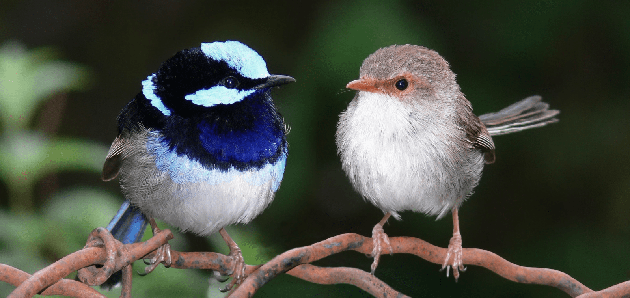- Home Home
-
Residents
Residents
- Waste & recycling Bins, clean-ups and disposing of tricky household items
- Parking Permits, car parks, maps and safety
- Your trees, plants & garden Tree pruning, native gardens and Living Connections
- Neighbourhood issues Report and resolve common issues
- Pets Dog and cat ownership, lost animals and off-leash parks
- Precinct committees Your local connection to Council
- Waverley LGA Maps Maps of the environment, planning zones and more
- Payments Pay for rates, certificates, permits and licences
-
Community
Community
- Children, youth & family services Early education, day care, support & resources
- Awards & grants Local Hero Awards, Garden Awards, Small Grants
- Get involved in your community Volunteering, creating connections, gardening
- Over 60s Services, activities, Mill Hill 60+ program
- Housing & homelessness Affordable housing, programs & support services
- Cultural diversity & inclusion Multiculturalism, language help, citizenship
- Aboriginal & Torres Strait Islander people Commitment to Reconciliation, plans & policies
- Disability inclusion Support services, access & inclusion projects
-
Business
Business
- Resources for Business Events, grants and support
- Innovation Roadmap 2025 to support business
- Tourism Home to Australia's most famous beach.
- Sponsorship Support local events
- Procurement Submitting tenders & expressions of interest to Council
- Commercial waste & recycling services Tailored waste services for business
- Mobile vending Waverley has limited mobile vending licenses
- Hello Bondi Council’s website to help visitors enjoy their stay
-
Recreation
Recreation
- Events Browse performances, exhibits and experiences
- Places of interest Historic buildings, markets, dining and Bondi Pavilion
- School Holiday Programs Fun-filled activities, workshops and events.
- Beaches & coast Beach information, safety, pool cleaning schedules
- Parks & reserves Location, public facilities and accessibility
- Arts & culture Artistic vision, creative programs, spaces and awards
- Venue & sport facilities hire Book indoor venues and sport facilities in Waverley
- Use of public spaces Events, commercial activations, filming etc
-
Environment
Environment
- Council leadership on environmental action Research, strategies and Council programs
- Climate resilience and reducing emissions Switch to electric, go solar and grants for apartments
- Water and the coast Keep beaches clean, save water and enjoy the sea
- Towards zero waste Reduce waste at home and at work
- Public tree management & urban greening Street Tree Masterplan and planting zones
- Native vegetation and animal habitat Join Bushcare and enjoy Waverley’s natural spaces
- Transport Council policy, bike and car share, electric vehicles
- Second Nature Council’s environmental news and events hub
-
Planning & Development
Planning & Development
- Development Applications The DA process, key documents & community consultation
- DA Tracking Tool Search a Development Application by number or date
- Application forms & certificates incl Planning, Rating, Construction and Occupation
- Waverley Local Planning Panel (WLPP) DA determination panel
- Compliance and regulations incl fire safety, food, pools and pollution
- Heritage incl Heritage Conservation Areas and fact sheets
- Urban planning and design Making Waverley a great place to live and work
- Major projects Council-delivered buildings, streets and parks
-
Council
Council
- Organisation structure Four directorates serve the community
- Mayor & councillors Your Mayor, Councillors, wards and contact details
- Council & committee meetings Dates, agendas and minutes of meetings of Council
- Advisory committees Advisory Committees of Council
- Policies, plans, strategies and reports Council's vision and delivery
- Jobs Current vacancies and working at Waverley
- Access to information Gaining access to publicly available information
- Payments Pay for rates, certificates, permits and licences
- Home
- >
- Environment
- >
- Native vegetation and animal habitat
- >
- Waverley’s native animals
- Council leadership on environmental action
- Climate resilience and reducing emissions
- Water and the coast
- Towards zero waste
- Public tree management & urban greening
- Native vegetation and animal habitat
- Transport
- Second Nature
Waverley’s native animals

Credit: Centennial Parklands
Biodiversity surveys carried out across the Waverley LGA identified 37 native birds, 11 reptiles, 4 frogs and 4 mammals living in the area.
Birds
Waverley is lucky to have high numbers of the Superb Fairy-wren. This small bird species is in decline in many other urban areas. One reason for this bird’s persistence in Waverley could be that the dense, shrubby coastal vegetation provides protective habitat from larger predatory birds and animals.
The male Superb Fairy-wren is brightly coloured during mating season. At this time, the plumage around his head and throat is bright blue and black. Females and non-breeding males are less showy with greyish-brown plumage.
Other small birds found in Waverley include the Willie Wagtail, White-browed Scrubwren and New Holland Honeyeater. It was the need to protect these small birds which propelled the creation of the Living Connections program, which is open to all residents with a suitable yard or large balcony.
The birds below were also found in the area:
- Yellow-tailed Black Cockatoo
- Rainbow Lorrikeet
- Pied Currawong
- Red Wattlebird
- Little Corella
- Welcome Swallow
- Laughing Kookaburra
- Australian Magpie
- Australian Raven
- Grey-headed butcherbird
- Nankeen Kestrel
- Koel
- Noisy Miner
- Channel billed Cuckoo
Reptiles
Waverley has a great diversity of lizards, that includes:
- Eastern Blue-tongue Skink
- Three-toed Skink
- Eastern Water Skink
- Eastern Water Dragon
- Dark-flecked Garden Sunskink
- Pale-flecked Garden Sunskink
- Cream-striped Shining-skink
- Pale-lipped Shadeskink/Gully Skink
- Broad-tailed Gecko
- Lesueur's Velvet Gecko
Frogs
Four species of frog have been found in Waverley:
Mammals
Native mammal species that have been found in Waverley include:
- Common Brushtail Possum
- Ringtail Possum
- Grey-headed Flying-fox, a threatened species in the state and nationally
- Gould’s Wattled Bat, named after the English naturalist John Gould
- Eastern Freetail Bat, a threatened species in New South Wales
Citizen Science
Any interested members of the community can help keep track of local wildlife populations by reporting sightings via iNaturalist.
Living with native animals
All native mammals, birds, amphibians and reptiles found in Waverley, are protected by the Biodiversity Conservation Act 2016.
Brushtail and Ringtail possums are a welcome addition to our urban ecology. If a possum sets up camp in your roof, follow the steps to take to safely relocate them.
Injured animals
If you find an injured native animal, contact WIRES or Sydney Wildlife Rescue.
Pest animals
There are two primary introduced species which have become damaging pests in the area:
- Urban foxes
- Common Myna birds (not to be confused with the native Noisy Miner)
Fox and Common Myna activity should be reported using the FeralScan Pest Mapping app (iOS or Android ).
Domestic animals also pose a threat to native wildlife, and it is a requirement to keep dogs on a leash in public places (except in designated off leash areas).
Council strongly encourages residents to keep cats indoors at all times, both for the safety of the cat and to protect native wildlife. On average, each roaming pet cat kills 186 reptiles, birds and mammals per year, most of them native to Australia. More information.
Quick links
- Your trees, plants and garden
- Community gardens
- Development Control Plan 2022 (refer part B for Biodiversity)
Related forms/documents


